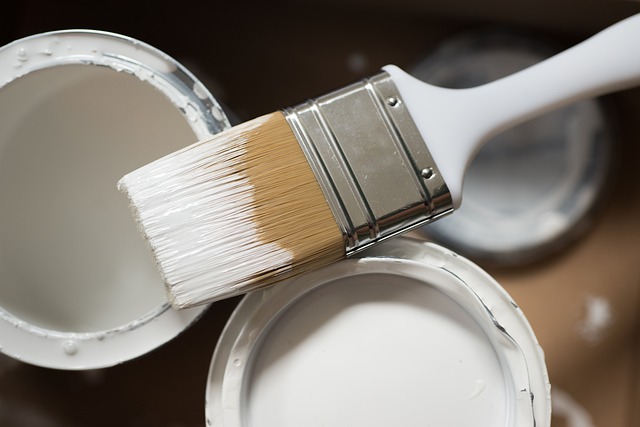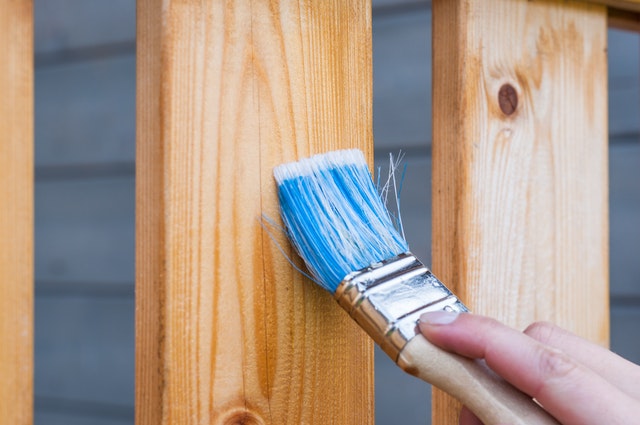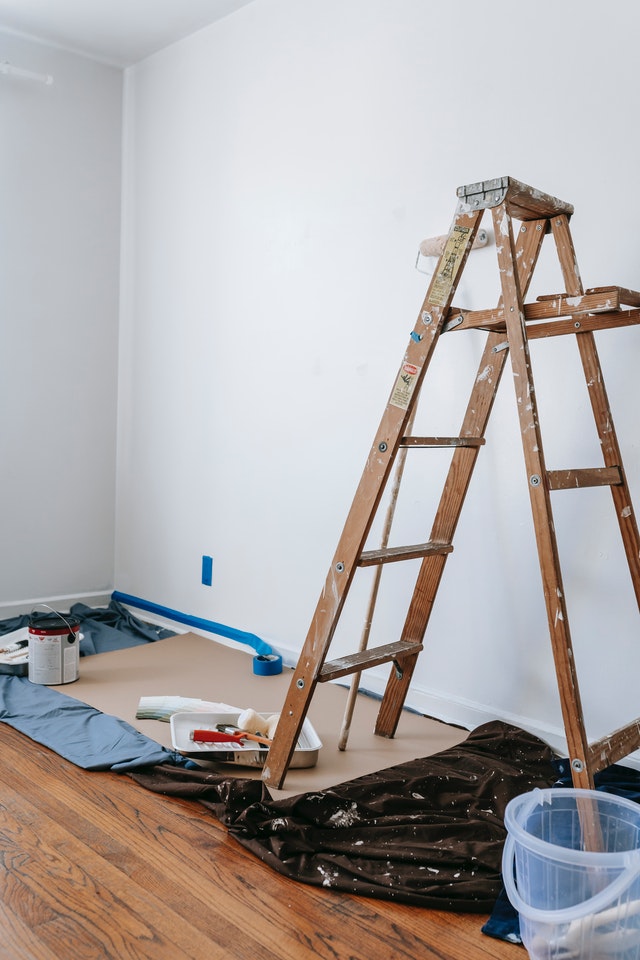Acrylic water-based varnishes are quick-drying, and available in matte, semi-gloss, or gloss finishes.
Spray varnishes are non-yellowing and need to be treated with great care. They tend to offer only limited protection and work better on water-based effects. They are available in matte and gloss finishes.
Shellac or knotting solution provides a barrier between the wood knots and the painted finish, stopping the resin in the wood from bleeding through and discoloring the paint.
French polish is made from shellac, a natural resin, in liquid suspension. It is the classic finish for fine furniture, but correct application takes some skill to master.
Button polish is made from unbleached shellac buttons, and is darker and more cloudy than French polish. It is a great favorite with restorers to recreate “old” finishes.
Shellac sanding sealer fills the grain in an open-grained wood such as mahogany and allows it to take a better finish.
Brushes, sponges, and rollers
One of the secrets of success in decorative painting is to know and use the correct tool for the job. Will it produce a fine enough line? Will it produce the surface texture I want? Always buy the best tools you can afford. They pay for themselves in the end, especially if they are properly cared for.
Remember also that brushes are made of different materials, as are rollers and sponges. Nylon and synthetic brushes work well enough with water-based paints, while oil-based paints generally require better quality hair or bristle brushes. These can be expensive, but are worth the outlay.
Softening brushes such as the high-quality badger-hair softener are very expensive. A hog-hair softener or dusting brush is cheaper and can also be used to remove dust.
Flogging brushes are used for wood a raining and some marble effects. They can also be used for dragging.
Dragging brushes are long-bristled brushes that are used for the dragging and graining techniques. An alternative would be an ordinary basecoat brush, but the effect is less subtle.
Stippling brushes come in a variety of shapes and sizes that produce different textural effects. They can be made of bristle or rubber and this dictates price.
Stencil brushes can be domed or flat and are available in different sizes. Made from hard-wearing bristle they produce a fine stipple effect when used over a stencil.
Gilder’s mops are soft brushes of camel or squirrel hair used primarily in gilding to remove surplus leaf or to apply metal powders. A soft artist’s brush makes a good alternative.
Fitch brushes are usually made of hog hair and come in shapes such as round, oval, flat, or chiseled. They are used for mixing small quantities of paint, cutting in, and painting moldings and small areas. They are also useful for splattering because of their stiff bristles. Use the tip of the brush to work the paint. Start with a round ¼ – ½ in (6-13mm), a flat ½ in (13mm), and possibly a chiseled ½ in (13mm).
Lining brushes are essential for line and other decorative applications. They hold the paint in ling bristles and allow easy flow. They are also ideal for marbling. Build up a collection starting with sizes 0, 1, and 3.
Artist’s brushes come in a variety of shapes and sizes. They range in quality from the best and most expensive sable to the more affordable hog-hair and nylon. They are excellent for cutting in on panels and for working in tight corners. A fine artist’s brush can be used instead of a lining brush.
Varnishing brushes come in a wide range of sizes. They are thickly bristled and can be flat or domed. Ideally purchase a 2 in (50mm)flat brush.
Household paintbrushes come in a range of sizes. For priming and undercoating it is best to use a straight-edge brush, and for cutting in edges, a chisel-edge brush. Choose the size that is most suitable for the job and the largest you feel comfortable with. A good range would be ½ in (13mm), 1 in (25mm), 2 in (50mm), 4 in (100mm), and 5 in (125mm).
Tooth brushes or nail brushes can be used to spatter color.
Wire brushes are used for preparing and cleaning surfaces and for liming techniques.
Sponges are used for mottling, stippling, and color washing. Use a natural sponge, the surface of which is pitted, or a synthetic sponge that has a smoother surface and is cheaper. A prepared cellulose decorator’s sponge is ideal for colors washing as it will not show marks.
Rollers can be used to apply base colors, plaster coats, and textured effects. Radiator rollers can be used on inaccessible areas and small roller heads can be used for stenciling. Many types of roller heads are available including foam, textured, and sheepskin. Avoid using foam rollers with oil-based paints as they be may affected by the mineral spirits in the paint.



